MR imaging of the fetal brain
- PMID: 19937234
- PMCID: PMC3229879
- DOI: 10.1007/s00247-009-1459-3
MR imaging of the fetal brain
Abstract
Fetal MRI is clinically performed to evaluate the brain in cases where an abnormality is detected by prenatal sonography. These most commonly include ventriculomegaly, abnormalities of the corpus callosum, and abnormalities of the posterior fossa. Fetal MRI is also increasingly performed to evaluate fetuses who have normal brain findings on prenatal sonogram but who are at increased risk for neurodevelopmental abnormalities, such as complicated monochorionic twin pregnancies. This paper will briefly discuss the common clinical conditions imaged by fetal MRI as well as recent advances in fetal MRI research.
Figures

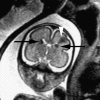



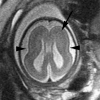
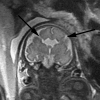
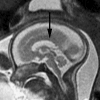


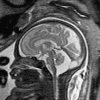





References
-
- Garel C. MRI of the fetal brain: normal development and cerebral pathologies. Berlin: Springer; 2004.
-
- Prayer D, Kasprian G, Krampl E, et al. MRI of normal fetal brain development. Eur J Radiol. 2006;57:199–216. - PubMed
-
- Glenn OA. Normal development of the fetal brain by MRI. Semin Perinatol. 2009;33:208–219. - PubMed
MeSH terms
LinkOut - more resources
Full Text Sources
Other Literature Sources
Medical

